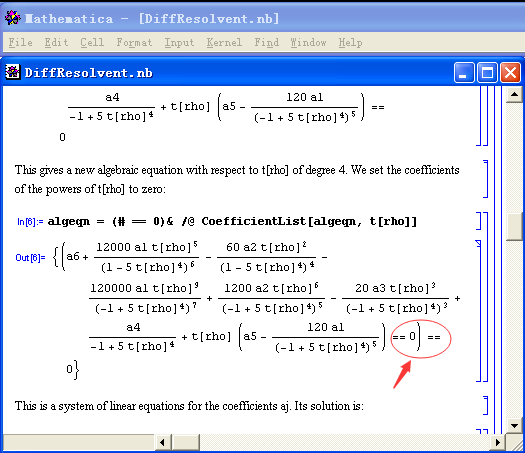Background
DiffResolvent.nb, here gives a method that solve quintic equations using differential equations.
There's a progress to transform polynomial equation into differential equation.
Then he gave an example:
$$x^5-5 x^3+5 x-t = 0$$
The roots of the equation satisfy the differential equation:
$$25 \left(4-t^2\right) x''(t)-25 t x'(t)+x(t)=0$$
Solve that and then can get the roots of quintic equation.
$$x(t)=c_1 \cos \left(\frac{1}{5} \arcsin\frac{t}{2}\right)-c_2 \sin \left(\frac{1}{5} \arcsin\frac{t}{2}\right)$$
We can easily check the results:
eq=x^5-5x^3+5 x-t
resolvent=25 (4-t^2) x''[t]-25 t x'[t]+x[t]
dso=DSolveValue[resolvent==0,x[t],t]/.Sqrt[4-t^2]->I Sqrt[t^2-4]
ser=Series[Evaluate[eq/.x->dso],{t,0,1},Assumptions->t\[Element]Reals];
sol=dso/.Solve[CoefficientList[ser,t]==0,{C[1],C[2]}];
SortBy[x/.NSolve[eq/.t->3,x],Im]
SortBy[sol/.t->3//N//Chop,Im]
I think this can't be solved by Solve.
Root[-3+5 #1-5 #1^3+#1^5&,1]//ToRadicals
Problem
But these codes were written in Mathematica 3.0 and can't run any more.
The behaviour of these functions differs from DifferentialRoot.
There's no intermediate process so I can't find whats wrong with these codes.
Goal
A function which convert the polynomial equation into differential equation.


Cockle (1860) and Harley (1862) developed a method for solving algebraic equations based on differential equations.and see how the algorithm really works, as the description in the above notebook and the steps done are very fuzzy at best. $\endgroup$